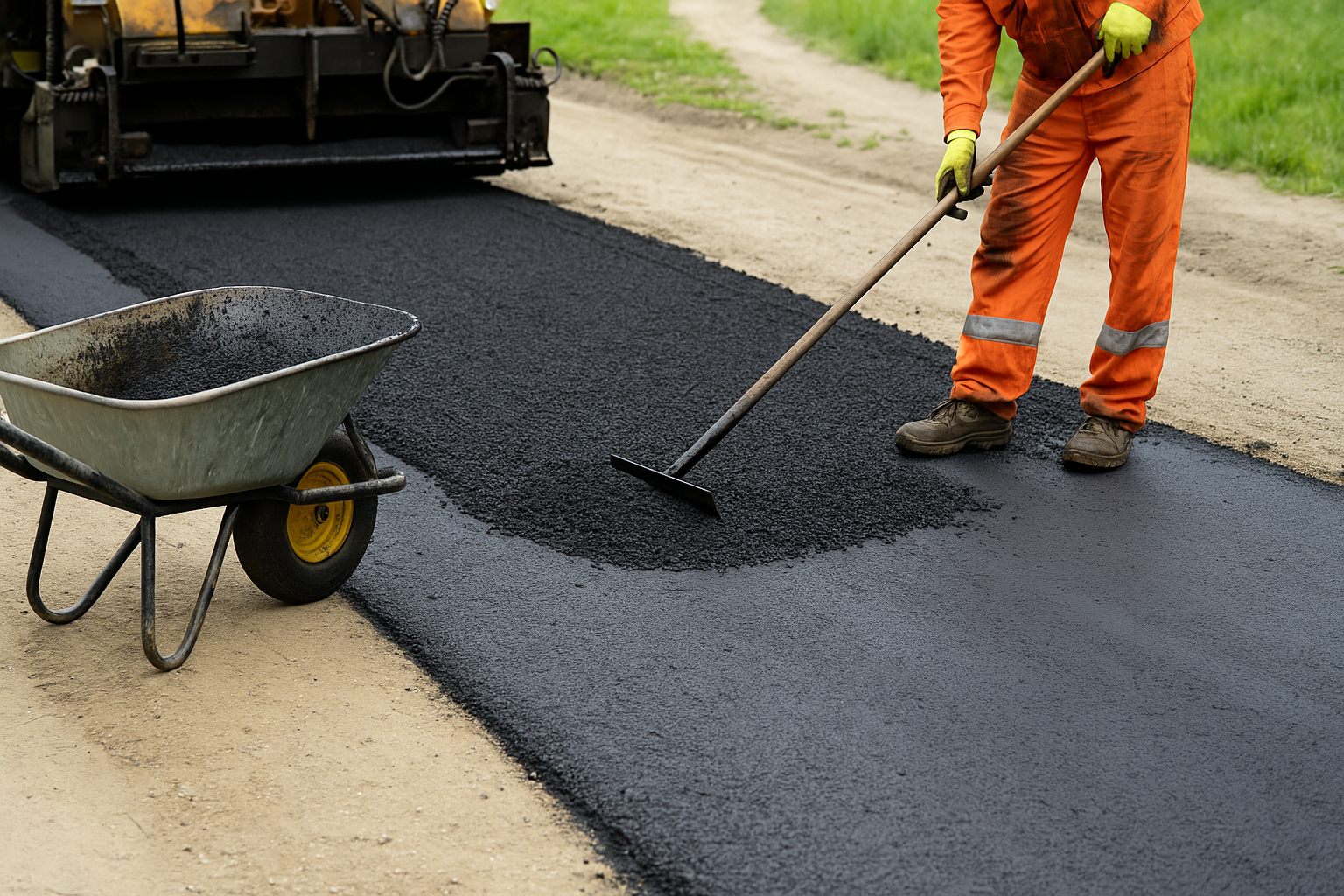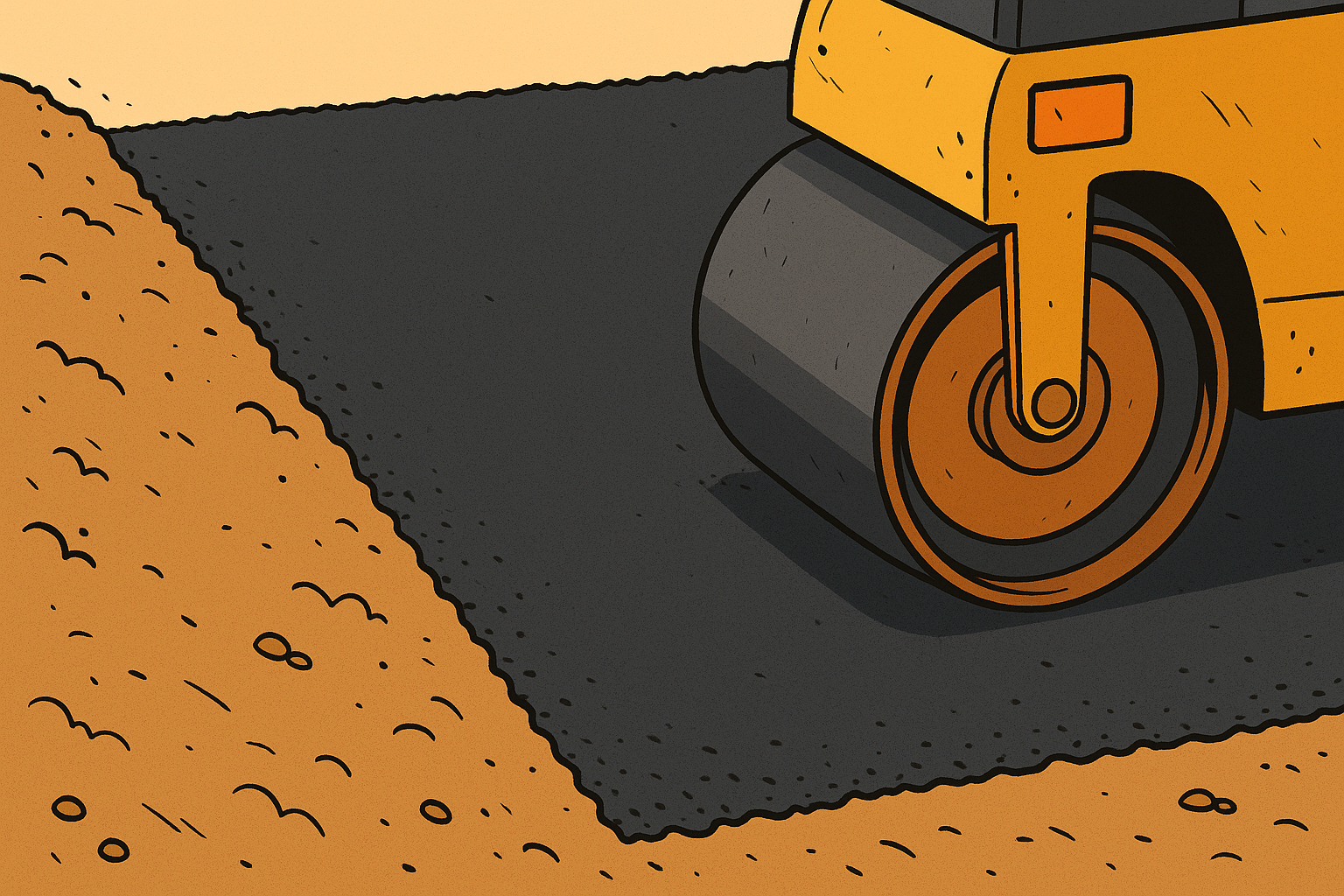Planning Guide
How Asphalt Thickness Affects Your Project
Choosing the right asphalt thickness is one of the most critical decisions in any paving project. This seemingly simple measurement dramatically impacts durability, load-bearing capacity, cost, and long-term performance. Whether you're planning a residential driveway, commercial parking lot, or industrial facility, understanding thickness guidelines helps you build smarter, avoid costly mistakes, and ensure your pavement stands the test of time.

Why Thickness Matters
Asphalt pavement is designed to flex slightly under load, distributing weight across the underlying base materials. This flexibility is both a strength and a vulnerability:
- Too thin: Insufficient thickness leads to premature cracking, rutting, and structural failure as the pavement cannot adequately distribute loads to the base layers
- Too thick: Excessive thickness wastes materials and budget without providing proportional benefits to performance or longevity
- Just right: Optimal thickness balances structural requirements with cost-efficiency, providing decades of reliable service
The ideal thickness depends on multiple factors including expected traffic volume, vehicle weight, climate conditions, soil characteristics, and base preparation. Professional engineers consider all these variables when designing pavement structures for specific applications.
The Anatomy of Asphalt Pavement
A properly constructed asphalt pavement consists of multiple layers, each serving a specific purpose:
- Subgrade: The native soil, properly compacted
- Subbase: Optional layer of larger aggregate for drainage and structural support
- Base course: Compacted crushed stone or gravel that provides the main structural support
- Binder course: Lower layer of asphalt that provides strength and structure
- Surface course: Top layer of finer asphalt that provides a smooth driving surface
When discussing asphalt thickness, we're typically referring to the combined thickness of the binder and surface courses. However, the performance of these layers depends heavily on proper preparation of the underlying base materials.
Recommended Thickness by Project Type
Different applications have different requirements based on expected use patterns. Here are industry-standard guidelines:
| Project Type | Recommended Thickness | Base Requirements |
|---|---|---|
| Residential Driveways | 2 to 3 inches | 4-6 inches of compacted aggregate |
| Light-Duty Parking | 2.5 to 3.5 inches | 6-8 inches of compacted aggregate |
| Commercial Parking | 3 to 4 inches | 8-10 inches of compacted aggregate |
| City Streets | 4 to 5 inches | 8-12 inches of compacted aggregate |
| Highways | 5 to 6+ inches | 12-18 inches of engineered base |
| Industrial Facilities | 5 to 8 inches | 12-24 inches of reinforced base |
These recommendations should be adjusted based on local soil conditions, climate, and specific use patterns. In regions with severe freeze-thaw cycles or poor soil conditions, increasing both asphalt and base thickness may be necessary.
Climate Considerations
Local climate significantly impacts the required asphalt thickness:
- Cold climates: Freeze-thaw cycles can cause heaving and cracking. Increase thickness by 0.5-1 inch in severe winter regions.
- Hot climates: High temperatures can cause softening and rutting. Use appropriate asphalt mixes designed for heat resistance.
- Wet regions: Proper drainage becomes critical. Ensure adequate base preparation and consider permeable options where appropriate.
Installation Best Practices
Proper installation techniques are just as important as choosing the right thickness:
- Multiple lifts: Install asphalt in layers (called "lifts") of 1.5-2 inches each for better compaction and structural integrity
- Proper compaction: Each layer should be thoroughly compacted to achieve optimal density
- Edge support: Ensure edges have proper support to prevent crumbling and deterioration
- Drainage design: Incorporate appropriate slopes (typically 1-2%) to prevent water pooling
- Joint planning: Minimize seams and ensure proper joining techniques between sections
The Impact on Project Costs
Asphalt thickness directly affects material quantities and costs. For example:
Cost Comparison for a 1,000 sq ft Driveway:
- 2-inch thickness: Approximately 9.1 tons of asphalt
- 3-inch thickness: Approximately 13.6 tons of asphalt
- 4-inch thickness: Approximately 18.1 tons of asphalt
At $120 per ton, the difference between 2 inches and 4 inches is about $1,080 in material costs alone.
While thicker asphalt costs more initially, it often provides better value over time through extended lifespan and reduced maintenance needs. The true cost should be evaluated on a lifecycle basis rather than just initial installation expense.
Key Benefits of Optimal Thickness
- Structural integrity. Proper asphalt depth distributes vehicle weight effectively, preventing deformation from heavy loads and reducing stress on the base layers. This structural strength is particularly important for areas with frequent heavy vehicle traffic.
- Cost efficiency. Balancing thickness with usage requirements prevents both underbuilding (which leads to premature failure) and overbuilding (which wastes resources). This optimization ensures you get maximum value from your paving investment.
- Extended lifespan. Properly designed thickness can extend pavement life by 50% or more compared to undersized installations. With appropriate maintenance, quality asphalt at the right thickness can last 20+ years before requiring significant rehabilitation.
Planning Your Project
Use these resources to ensure your asphalt project has the optimal thickness:
- Calculate precise material needs with the asphalt calculator
- Learn more about depth requirements in this comprehensive depth guide
- For residential projects, check this guide to estimating asphalt for driveways
- Understand how thickness affects cost in this pricing guide
- Learn about common estimation errors in this mistakes guide
Remember that while these guidelines provide a solid starting point, consulting with a professional paving contractor or engineer is recommended for projects with unique requirements or challenging site conditions. The small investment in professional advice can prevent costly mistakes and ensure your pavement performs as expected for decades to come.



